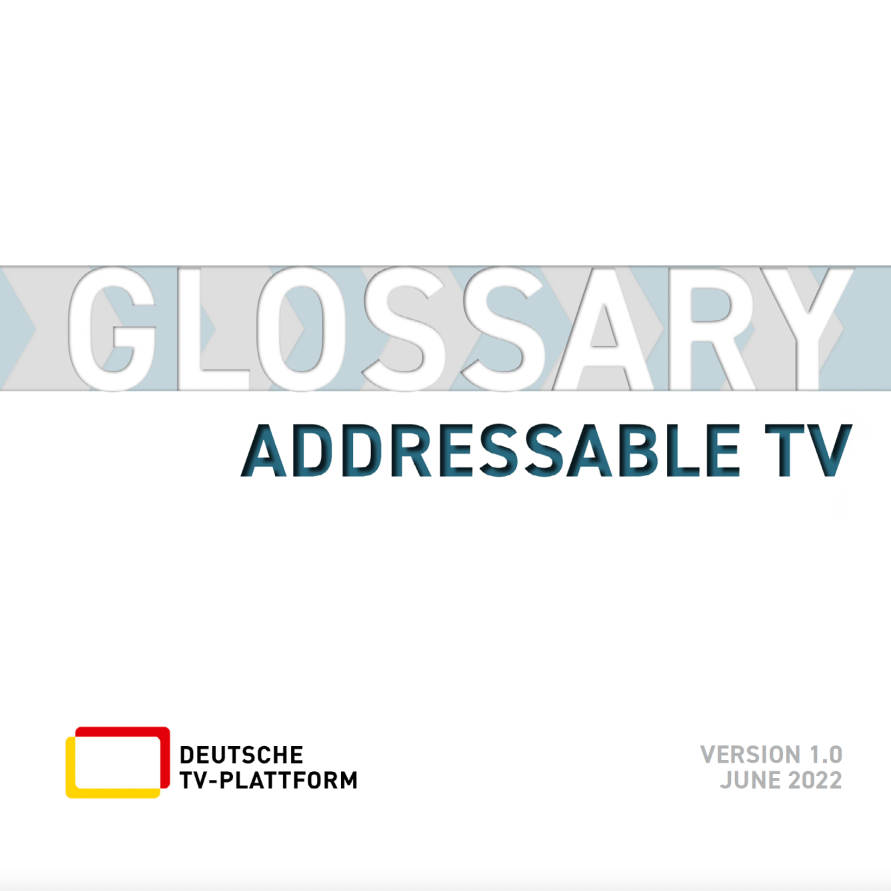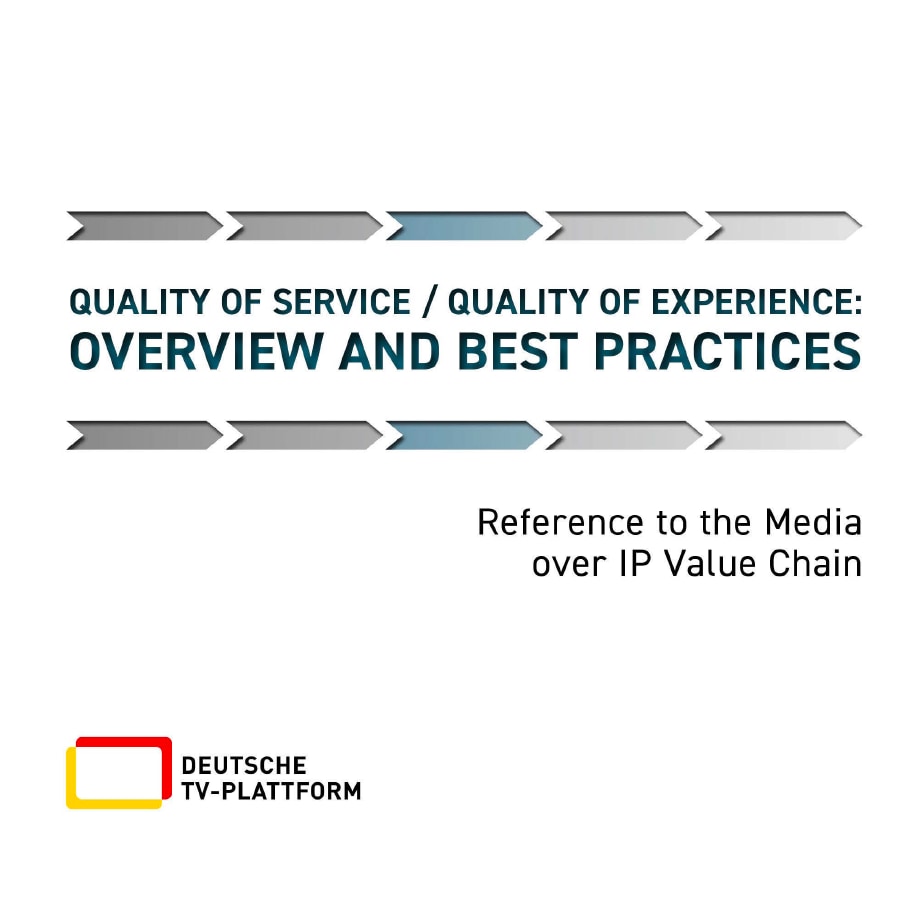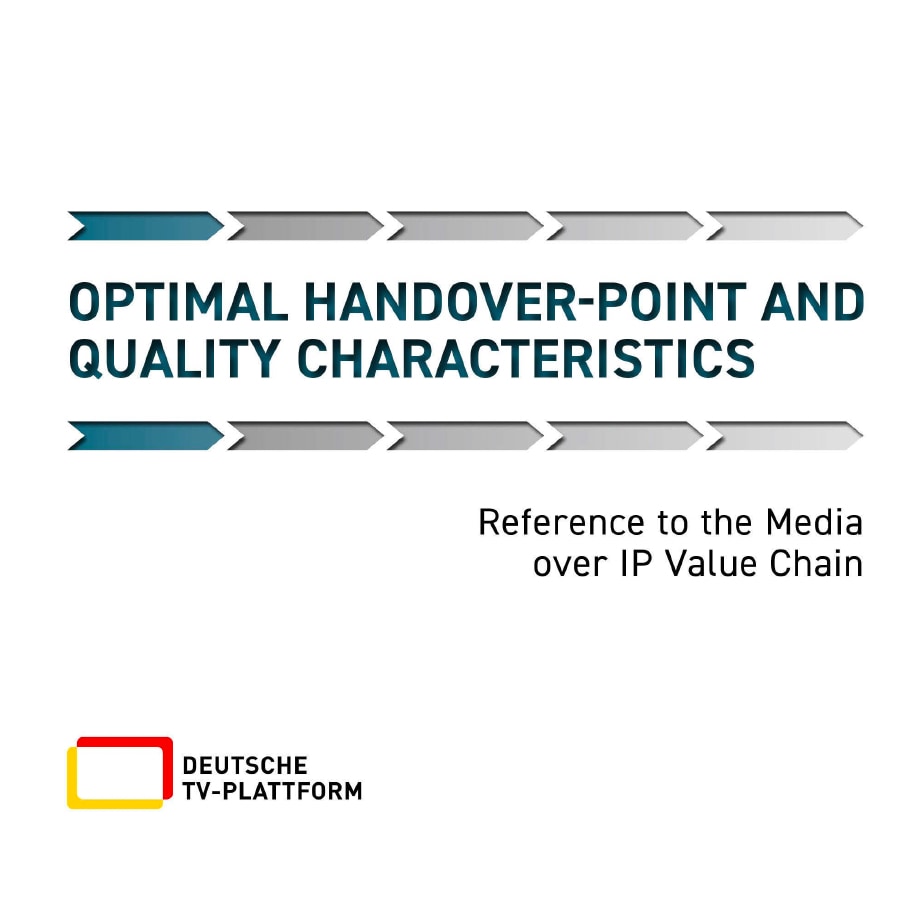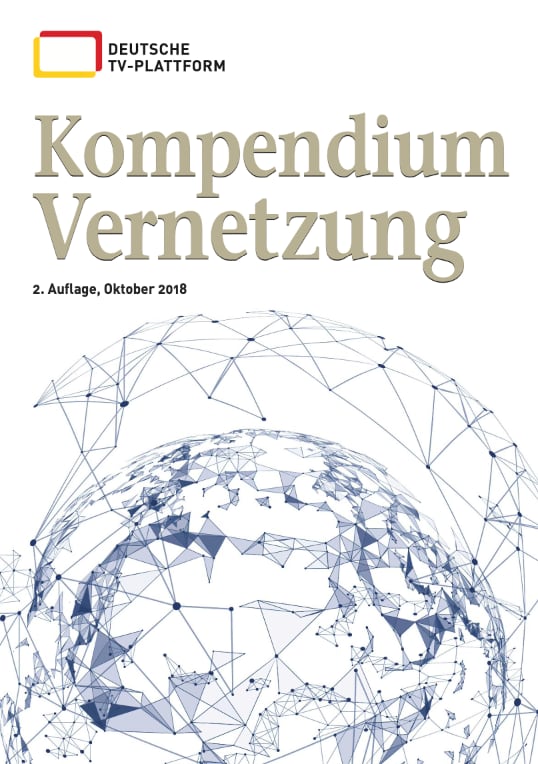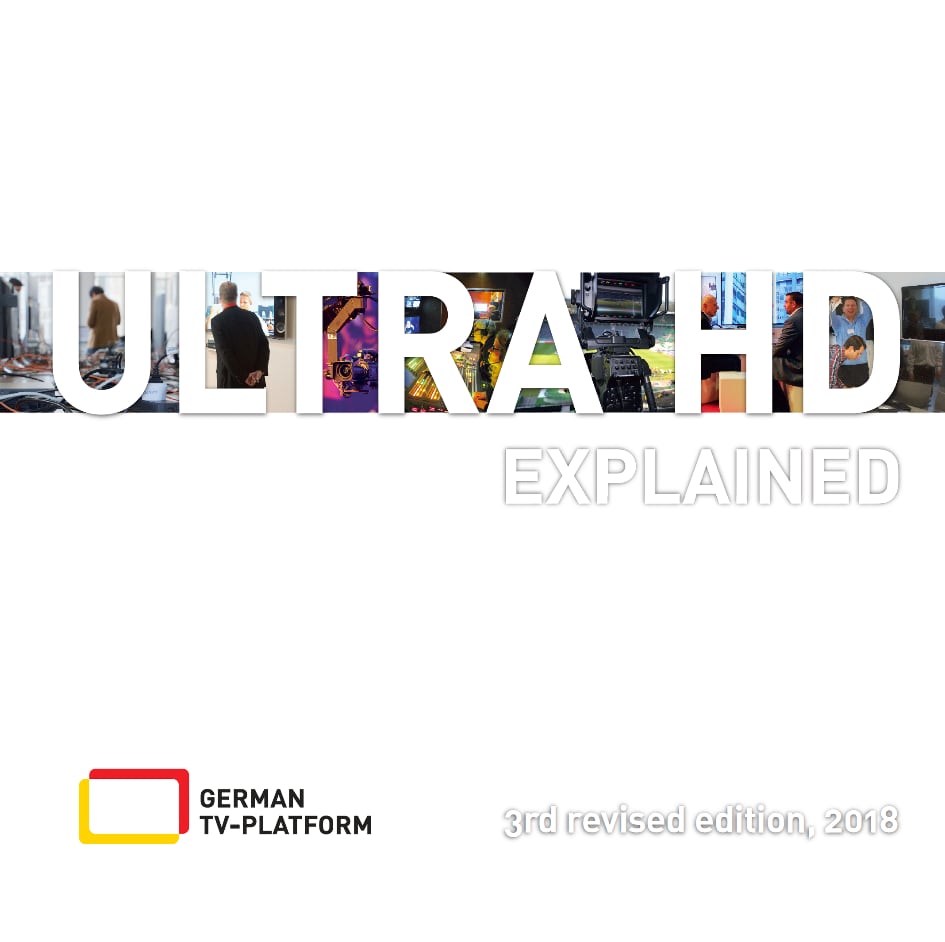Technical Brochures & White Papers
One of the main tasks of Deutsche TV-Plattform is, according to its statutes, to inform and educate the (specialist) public and consumers about technological developments in the field of audiovisual media. In addition to web specials (e.g. on the introduction of DVB-T2 HD or the analogue switch-off in cable), information flyers etc., Deutsche TV-Plattform fulfils this task by means of specialist brochures. Here, the association can draw on the entire know-how of its broad member base.
In addition, Deutsche TV-Plattform publishes white papers on specific, media-technological topics. The association can contribute the entire know-how of its broad membership base here.
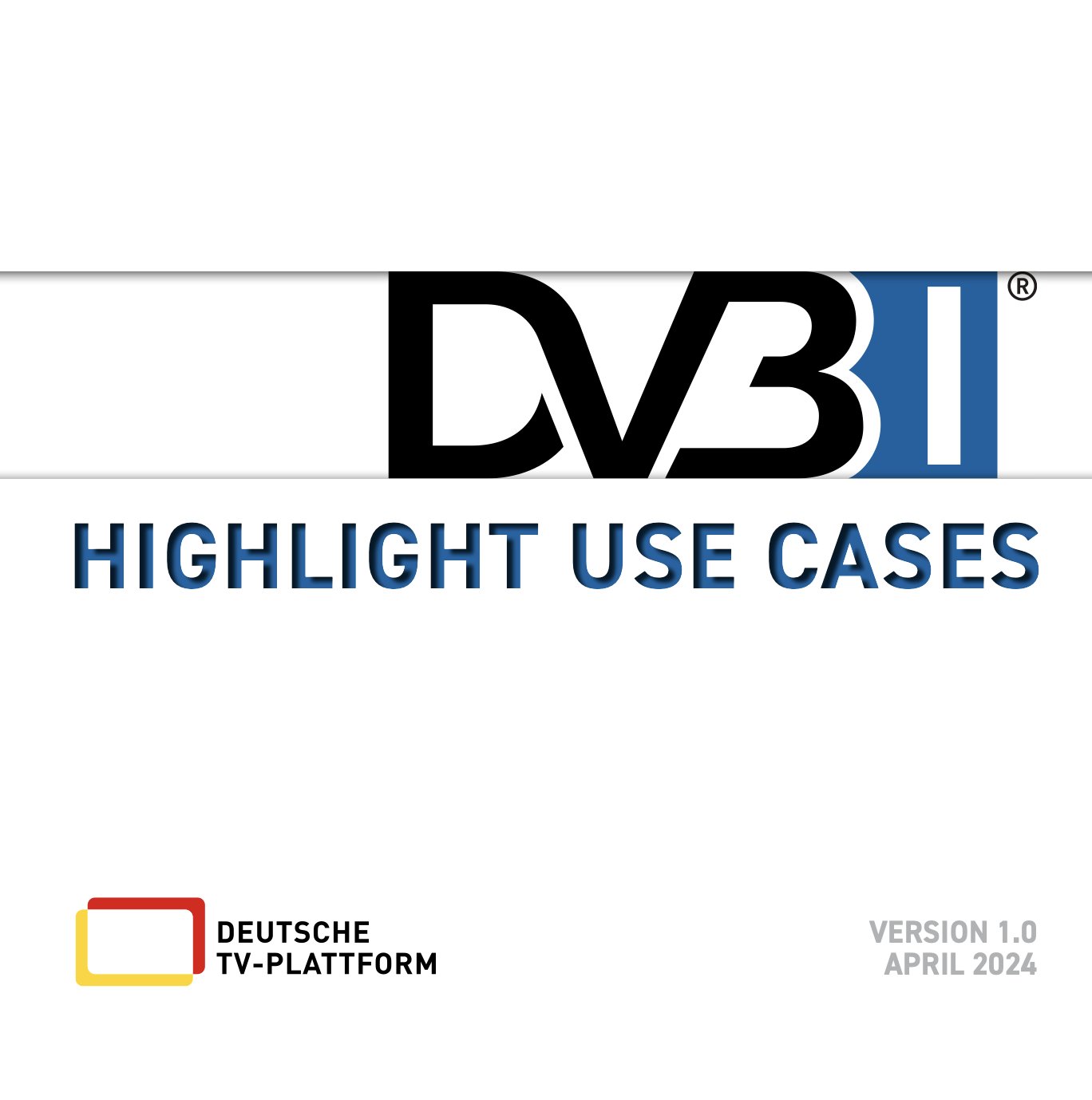
The description of relevant DVB-I use cases is aimed at all players along the TV value chain as well as end customers. In particular, we address decision-makers in companies in order to show them the potential of DVB-I technology. To this end, the most important features (USPs) of DVB-I will be described and the advantages for market participants identified. The technical realisation of the use cases is not the aim of this description. (Only available in German Language)
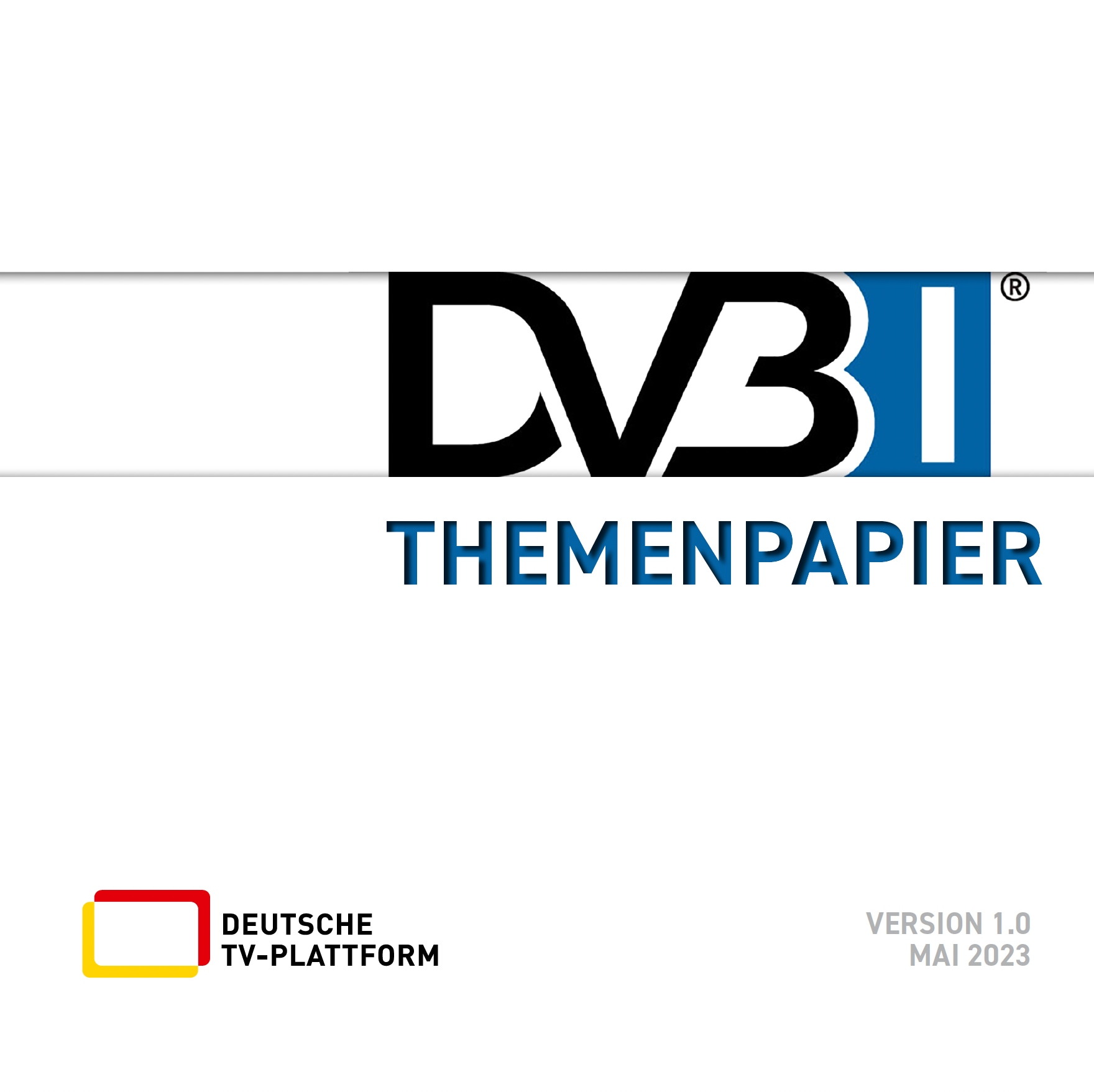
The DVB-I issue paper of the Deutsche TV-Plattform aims to create transparency with regard to the potential of DVB-I and to describe the possible/most likely scenarios as well as the interests/requirements of the individual market participants. Furthermore, it presents the added value for end customers.
DVB-I (I for Internet) provides TV-based services (linear TV, VoD) on receivers with broadband access via the Internet. This can be done „over the top“ as well as via „managed“ networks. The user experience is similar to the reception of DVB services via DVB-T, DVB-S or DVB-C. DVB-I standardises the signalling and distribution of IP-based TV services. Users no longer have to download an app for each service, but can consume the services contained in the service list directly with a standard DVB-I client.
(Only available in German Language)
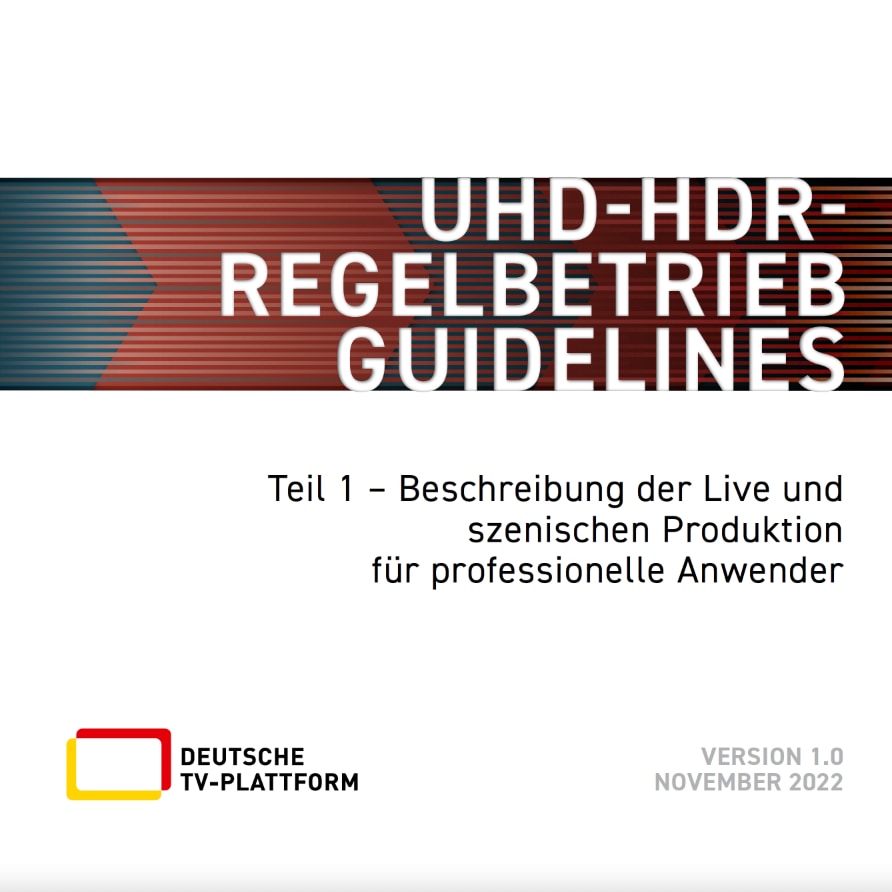
The Guidelines UHD-HDR Regular Operation are primarily directed at production companies, producers and the technical managers of TV broadcasters with the intention of making the visual perception of UHD HDR programmes predictable by creating references for the various subject areas.
The objective of these guidelines is to create a better UHD-HDR experience for the consumer. The guidelines define the necessary requirements for successful UHD-HDR live and also staged productions. Later, another document will describe the requirements within the broadcast centres with the post-production processes as well as the distribution to the end customers. This series of documents is thus a recommendation for the implementation of UHD-HDR processes and suitable to support the respective house standards and workflows.
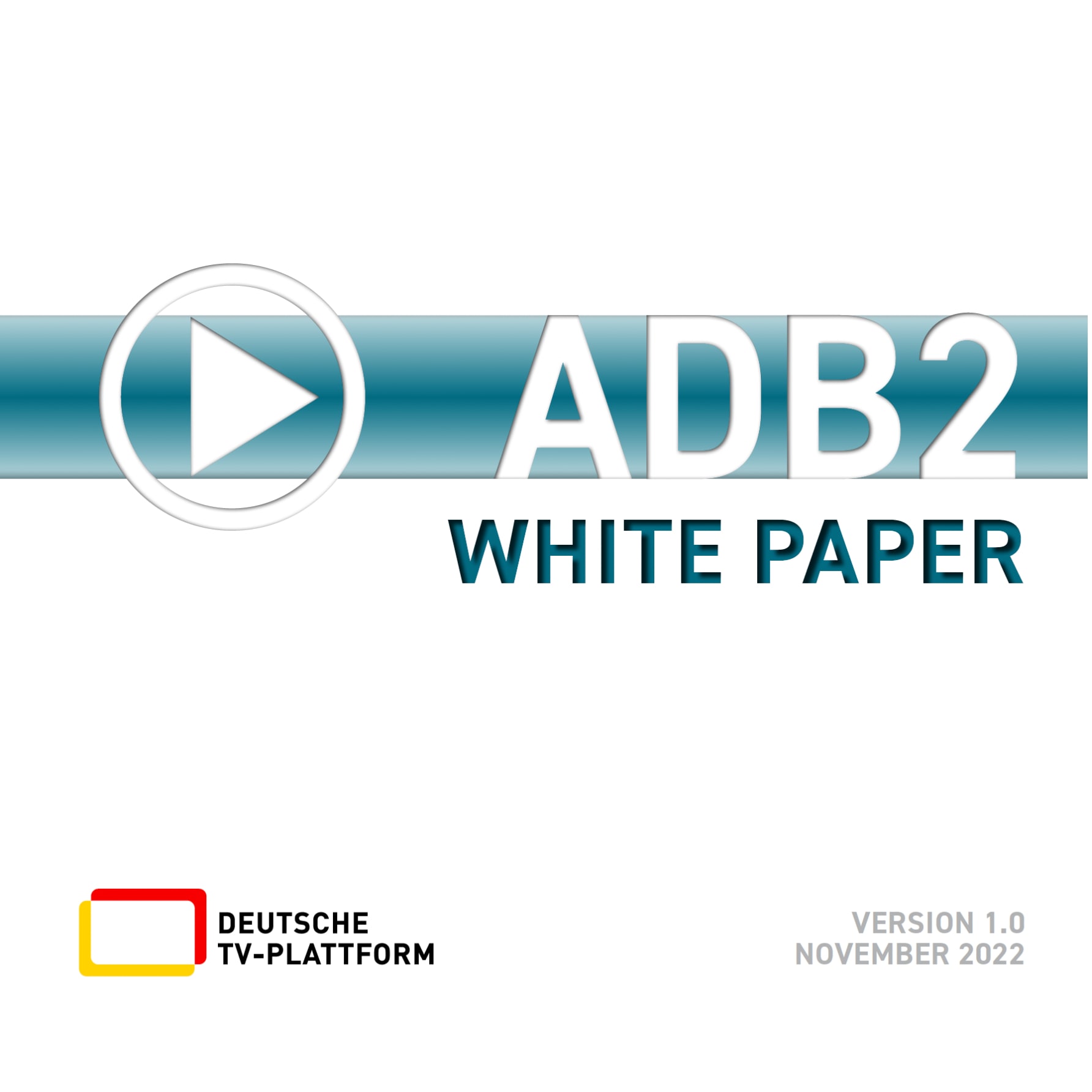
The White Paper ADB2 describes the technical profiles and requirements for HbbTV devices for a market launch of ADB2 + Targeted Advertising in Germany.
On this basis, a number of new services should become possible, in addition to the existing HbbTV offerings in the market. The white paper refers to typical application scenarios and also includes a practical report on ADB2-OnAir tests carried out by TF. The main message of the document is that audio and video watermarks work on all relevant distribution channels and support the market-relevant use cases described in the white paper.
The white paper is primarily aimed at broadcasters, equipment manufacturers, technology providers, platform operators and research and development institutions.
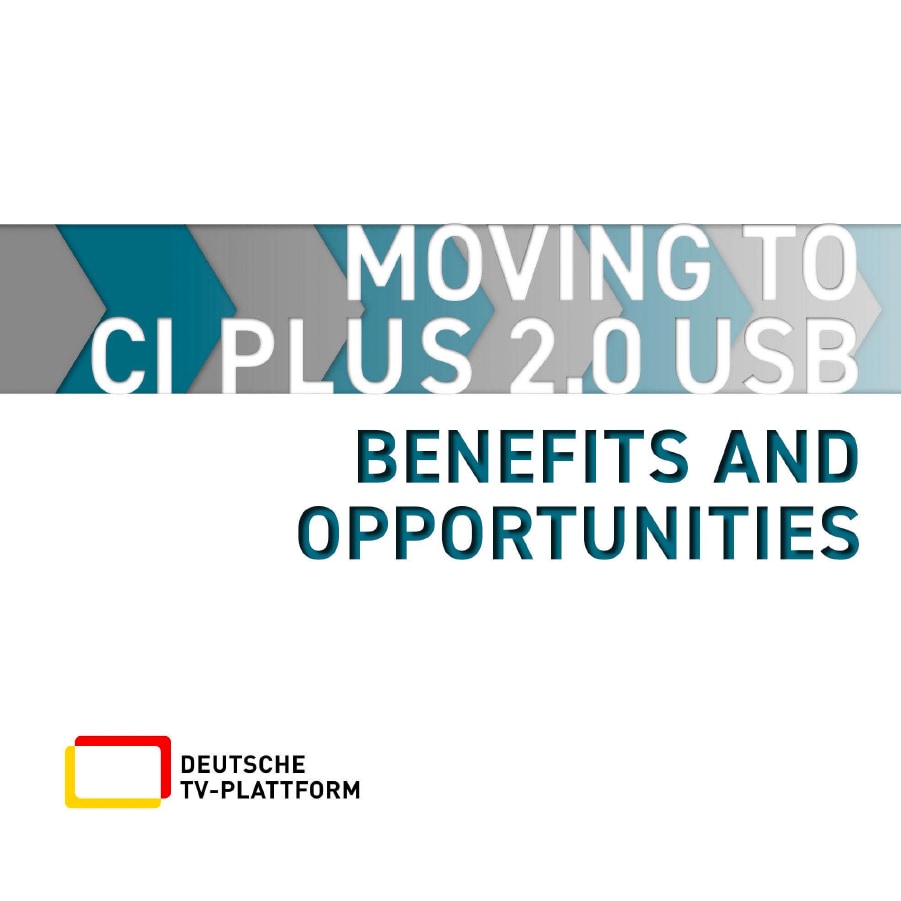
Out of the AG Ultra HD Task Force CI Plus, the Round Table CI Plus 2.0 was created in May 2021 after two successful workshops on the potential of CI Plus 2.0. The internationally staffed round table organised by Deutsche TV-Plattform is open to all market participants.
The aim is to moderate and coordinate the discussion on a possible market launch of CI Plus 2.0 in the DACH region. In contrast to the previous CI Plus standard, CI Plus 2.0 is based on the USB form factor. In addition to the new hardware, many other questions are relevant for a possible changeover (e.g. migration scenarios), which will be discussed within the framework of the Round Table. The white paper „Moving to CI Plus 2.0 USB – Benefits and Opportunities“, which was prepared within the CI Plus 2.0 Round Table, provides a comprehensive and up-to-date view of the challenges and opportunities of a possible market launch of CI Plus 2.0.
The term ATV is on everyone’s lips. However, there is still a need for clarification as to what is actually meant by it – or perhaps not. That is why Deutsche TV-Plattform has compiled a glossary around ATV to clarify and delimit terms. At the same time, it offers a well-founded overview of the currently relevant fields. ATV is not limited to advertising alone, but is currently mainly discussed and applied in this context. Therefore, this version 1.0 of the glossary focuses on terms relevant to advertising.
In the first section, the glossary first explains some basic terms. The second section deals with important content and forms of advertising. The third section forms the core of the glossary and describes essential terms of advertising technology (ad tech). The glossary is concluded by naming important technological standards that play a role in the context of ATV.
The advantages of video streaming are also becoming increasingly relevant for TV: Content can be consumed at any time and on a variety of internet-enabled devices, and no special TV network infrastructure (satellite, terrestrial, cable) is needed any more. In order to achieve broad user acceptance for the new transmission paths, it is essential that stability and quality are at the same level as with traditional broadcasting.
In order to be able to make reliable statements about stability and quality, this white paper deals with the quality measurement of video streaming. The aim of this white paper is to give DTVP members a practical introduction to the relatively new but highly relevant world of quality measurement in video streaming. In particular, it is intended to show that in the end it is the so-called Quality of Experience (QoE) that matters, i.e. the quality of what users experience individually on their end devices. Please note that the white paper is currently only available in German.
In the entire chain from the creation of content to marketing to the customer (consumer), one or more "content providers" deliver content to a "platform" (contribution). The transfer points and the quality characteristics play an essential role here.
Es gibt zurzeit eine Vielzahl von Übertragungswegen und Codecs für Content mit jeweils unterschiedlichen technischen Spezifikationen und Qualitätseigenschaften. Die daraus resultierende Vielfalt der Kombinationen, die mit der Zeit entstanden ist, ist mittlerweile sehr komplex und erzeugt damit erhöhte Aufwände, sowohl bei Broadcastern als auch bei Plattformen. Mit dem White Paper „Optimal Handover-point and Quality Characteristics“ hat die Deutsche TV-Plattform Best-Practice-Standards erarbeitet, die praktikable, zweckmäßige und wirtschaftlich sinnvolle Empfehlungen für die gesamte Branche bieten.
Our areas of life have long since become digital and the variety of consumer electronics devices is constantly increasing. By CE devices we mean devices of the classic consumer electronics, the PC environment and telecommunications, products ranging from digital TV sets, notebooks and tablets to smartphones. While in the past these devices were operated in a rather singular way, networking among them has increased in recent years. The networking of these devices brings new user comfort for the consumer and also new applications.
This compendium presents the current status of networking technologies and applications. Based on the technical description of the transmission standards, the networked devices are presented with their interfaces and applications. This is followed by a presentation of some selected and typical networking scenarios as well as technical recommendations for experts and laymen.
In this new edition, the further developments of the transmission standards and interfaces have been taken into account, and their mode of operation has been presented in more detail. The usage scenarios and recommendations have also been expanded and adapted to the current state of the art. Please note that the compendium is currently only available in German.
The "Ultra HD Explained" booklet, which is popular with both professionals and consumers, was first published in 2016 and has been updated annually until the third edition in 2018.
It provides comprehensive information and education on all aspects of Ultra HD for professionals, consumers and retailers. Nearly all contents e.g. on standardisation, technologies, devices are still up to date today. "Ultra HD explained" is still a worthwhile read for anyone who wants to know more about UHD, HDR & Co. Only the section on UHD content is outdated. You can find a current overview of this in our information portal on UHD and HDR, www.uhdr.de.

